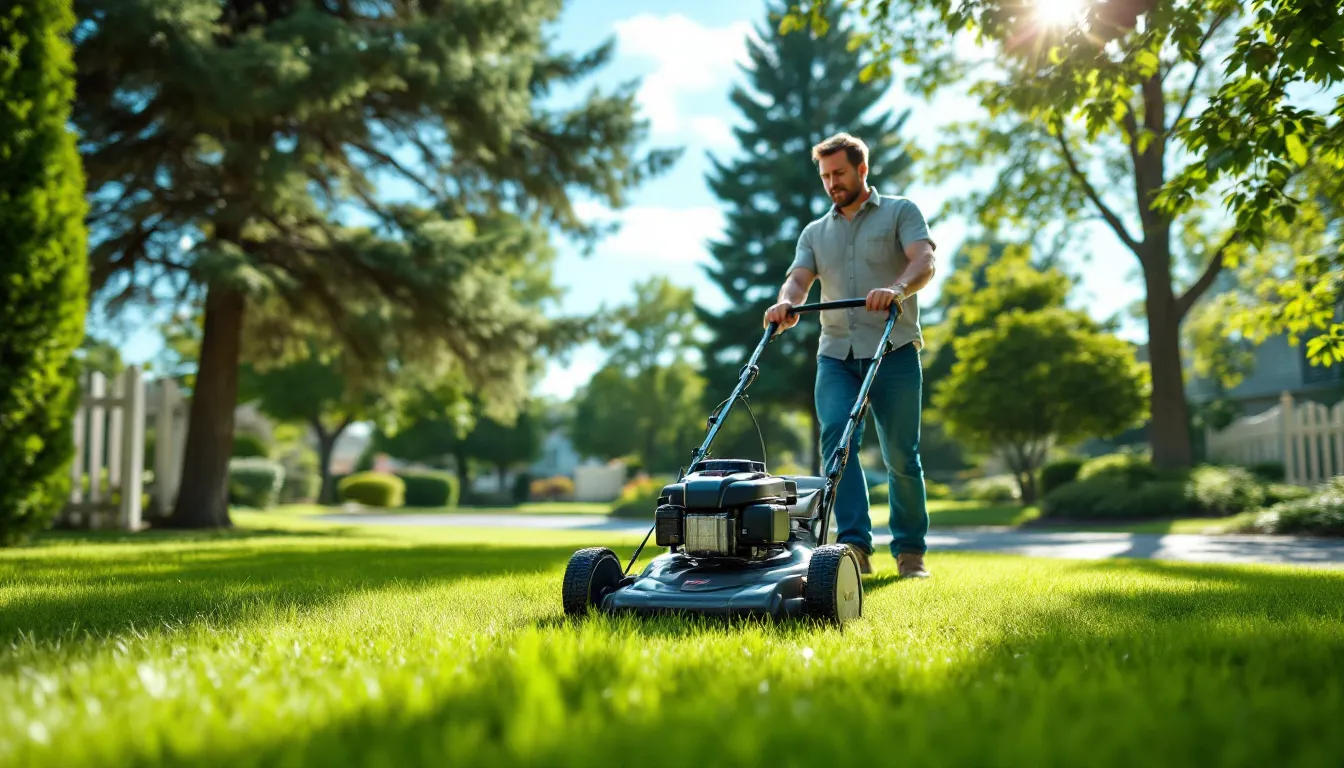A lush green lawn is the pride of any homeowner, but keeping it looking its best requires a bit of effort. One of the most common questions you might have is how often you should mow your lawn. The answer isn’t one-size-fits-all; it depends on various factors like grass type, weather conditions, and your personal preferences.
Mowing too infrequently can lead to an unruly yard, while cutting too often can stress your grass. Finding the right balance is crucial for maintaining a healthy lawn. In this article, we’ll explore the key factors that influence mowing frequency and provide you with practical tips to keep your yard looking pristine all season long.
Factors Influencing Mowing Frequency
Several elements impact how often you should mow your lawn. Understanding these factors helps in maintaining optimal grass health and aesthetics.
Grass Type
Grass types significantly affect mowing frequency. Cool-season grasses, like Kentucky bluegrass and fescue, typically grow more during spring and fall. Mow every 5 to 10 days during peak growth. Warm-season grasses, such as Bermuda and Zoysia, thrive in summer, requiring mowing every 7 to 14 days. Adjust frequency based on your specific grass variety and its growth cycle for best results.
Climate Conditions
Climate conditions play a crucial role in determining mowing frequency. In humid regions, grass often grows faster, necessitating more frequent mowing, while arid areas may slow growth, allowing longer intervals between cuts. During wet seasons, you might need to mow more often due to vigorous growth, whereas, in extreme drought, reduce mowing frequency to prevent stressing the lawn.
Lawn Health
Lawn health directly influences mowing frequency. A healthy lawn grows rapidly, requiring regular mowing to maintain height and appearance. Conversely, stressed or unhealthy lawns, often due to drought or disease, may not need frequent mowing. Monitor grass height and overall health, adjusting your mowing schedule to avoid cutting off too much at once, which can harm the grass.
General Guidelines for Mowing

Understanding the frequency of lawn mowing is essential for maintaining its health and appearance. Here are some specific guidelines to help you determine the right mowing intervals and height considerations.
Recommended Mowing Intervals
Mowing intervals heavily depend on grass type and growth conditions. For cool-season grasses, such as Kentucky bluegrass and fescue, aim to mow every 5 to 10 days during peak growth periods in spring and fall. Warm-season grasses, like Bermuda and zoysia, thrive in summer and require mowing every 7 to 14 days. Adjust these intervals based on growth rates influenced by weather conditions, such as rainfall and temperature. If your lawn grows rapidly due to favorable conditions, increase mowing frequency. Conversely, during dry spells, reduce cutting to promote healthier growth.
Height Considerations
Mowing height significantly impacts lawn health and resilience. Generally, maintain a cutting height of 2.5 to 3.5 inches for cool-season grasses. For warm-season grasses, target a height of 1.5 to 3 inches. Keeping grass at the appropriate height encourages deep root growth, enhances drought resistance, and suppresses weeds. Avoid removing more than one-third of the grass blade length during each mowing session to prevent stress on the lawn. Adjust your mower’s settings as necessary to achieve these heights consistently, ensuring your lawn remains lush and green.
Seasonal Mowing Tips
Seasonal changes impact your lawn care routine. Adjusting your mowing practices based on the season ensures optimal grass health and appearance.
Spring Mowing Practices
In spring, grass grows vigorously due to warming temperatures and increased sunlight. Mow every 5 to 10 days for cool-season grasses, ensuring you trim to a height of 2.5 to 3.5 inches. Start with a higher cutting height to avoid stressing the grass. Gradually lower your mower as the season progresses to promote robust growth and resilience against weeds.
Summer Maintenance
Summer heat can slow down grass growth, especially for cool-season varieties. For warm-season grasses, mow every 7 to 14 days, keeping the cutting height between 1.5 to 3 inches. Taller grass withstands drought better and retains moisture. Regular checks for moisture levels and adjusting mowing frequency based on rainfall or extreme heat can sustain lawn health during this season.
Fall and Winter Preparation
In fall, prepare your lawn for winter by mowing less frequently, approximately once every two weeks. Cut cool-season grasses to a height of 2 to 3 inches to encourage strong roots. For warm-season grasses, maintain a height of 1.5 to 2.5 inches. As temperatures drop, perform a final mow before winter dormancy to clean up leaf debris and provide the lawn with adequate air circulation over the cold months.
Common Mistakes to Avoid
Avoiding pitfalls in lawn care can significantly enhance your yard’s health and appearance. Here are some common mistakes to steer clear of.
Cutting Too Short
Cutting your grass too short stresses the lawn and can lead to various issues. Many opt for a lower cutting height, thinking it’ll reduce mowing frequency. However, this practice can weaken the roots, making the lawn more susceptible to pests and diseases. It’s best to maintain a height of 2.5 to 3.5 inches for cool-season grasses and 1.5 to 3 inches for warm-season grasses. Longer grass encourages deeper root systems, retains moisture, and suppresses weed growth.
Ignoring Weather Patterns
Ignoring local weather patterns can adversely affect lawn health. Mowing during periods of drought or extreme heat stresses the grass, leading to discoloration and potential damage. Adjusting your mowing schedule based on rainfall and humidity promotes healthier growth. For instance, after substantial rainfall, grass growth accelerates, necessitating more frequent cuts. Monitoring the weather helps ensure your lawn receives optimal care and maintains its lush appearance.
Conclusion
Finding the right mowing frequency for your lawn is crucial for its health and appearance. By considering factors like grass type and weather conditions you can create a mowing schedule that works best for your yard. Remember to adjust your mowing height to promote deep root growth and resist pests.
Regularly monitoring your lawn’s condition and adapting your routine will help you maintain that lush green look you desire. With a bit of attention and care your lawn can thrive throughout the seasons. Embrace these guidelines and enjoy the satisfaction of a well-manicured lawn.

Hi, I’m Md Rofiqul, a gardening enthusiast who loves spending time in the garden and backyard. I enjoy caring for plants, growing flowers and vegetables, and creating a green space that feels peaceful and refreshing. Gardening is more than just a hobby, it’s a passion that connects me to nature and brings joy to my daily life. Living with plants inspires me to embrace simplicity, patience, and sustainability while making every day more colorful and rewarding.
